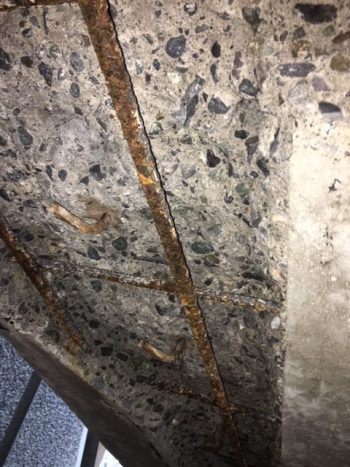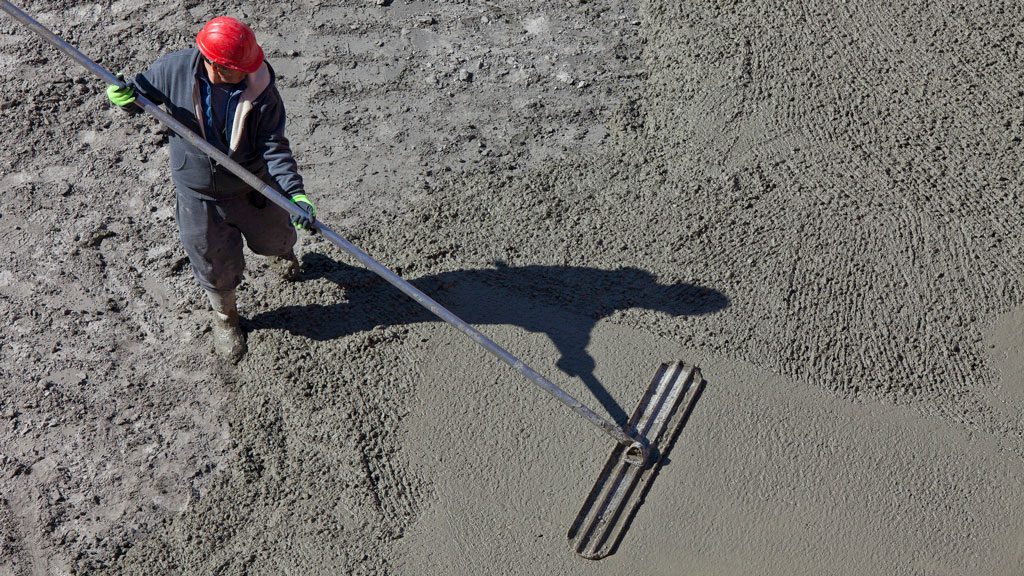According to an engineer and researcher at the British Columbia Institute of Technology (BCIT), global climate change is expected to lead to the increased deterioration of concrete infrastructure in Canada in the future.
Sudip Talukdar, civil engineering program coordinator in BCIT’s School of Construction and the Environment, did computer simulations of the effect of climate change on concrete in Vancouver and Toronto.
He found that concrete is more vulnerable to climate change-induced deterioration in one of the cities than the other, because of different geographic location and climate.
Although most scientists believe increasing greenhouse gas emissions are affecting the Earth’s climate, there has been little investigation until recently of the impact of climate change on concrete infrastructure, says Talukdar.
But researchers have been catching up, and more attention is being paid to what happens when an increase in greenhouse gasses and higher heat and humidity work their way into concrete infrastructure.
For example, Engineers Canada is developing an infrastructure climate risk procedure called the PIEVC Engineering Protocol.
Co-sponsored by Natural Resources Canada, the protocol is billed as a screening tool for assessing infrastructure vulnerability to current and future climate change.
In addition, Talukdar is a member of an American Concrete Institute committee that is investigating climate change and the sustainability of concrete structures and how to impede and control concrete deterioration.
He also belongs to an International Association for Bridge and Structural Engineering task force that analyses the impact of climate change on buildings, bridges and other civil engineering structures, and makes recommendations for mitigation and remediation.
Talukdar says researchers have identified three major climate change-related threats to concrete:
- Increased concrete weathering and abrasion due to climatic stress and greater frequency of extreme weather events. Countries in low-lying, flood-prone areas, such as the Netherlands, will have their flood protection systems threatened more often, as water levels rise and storm frequencies increase. Climate change might also affect design values for wind loads in the Netherlands.
- Increased risk of chloride-induced corrosion. Global warming may cause chloride-induced corrosion (commonly caused by road salt) of steel reinforcement by up to almost one-fifth of the rebar area.
- Increased risk of carbonation-induced corrosion.
Increases in carbonation rates of reinforced concrete structures (lowering the pH) are expected as a result of increased temperatures and concentrations of carbon dioxide in the air.

Talukdar says that, although climate change will have little impact on the durability of concrete structures that are built today, it will make itself felt on infrastructure built in the near future.
“Structures that are slated to be constructed in 2025–2030 should begin to take into account degradation due to climate change when they are being designed,” he says.
Concrete structures that are built towards the end of the 2020s in areas where carbonation-induced corrosion is a concern (due to moderate humidity and higher temperatures), can expect to begin to show a reduction of approximately 15–20 years in their “repair-free lifespan,” with signs of damage appearing within 40–45 years of construction.
Talukdar says a number of measures can be taken to protect against degradation.
Have you subscribed? Sign-up to receive the latest news on BCIT.
They include increasing concrete covering when and where it is needed; improving concrete quality to reduce permeability; and adding surface coatings or barriers to inhibit the penetration of carbon dioxide.
In the cases of Vancouver and Toronto, Talukdar developed computer-based climate scenarios for both cities that included climate change-induced variations in concentrations of atmospheric carbon dioxide, temperature and humidity, seasonal fluctuations in temperature, and a gradual lengthening over time of summer.
He then ran simulations to predict the effect of climate change on the progress of carbonation-induced corrosion in reinforced, unloaded concrete.
The results of Talukdar’s research showed that, in both cities, climate change will significantly increase the deterioration of undamaged, unstressed and unloaded concrete caused by carbonation.
Although there may not be any practical effect on the short-term structural integrity of concrete, structures which are cracked or under load are likely to show significantly less time before carbonation-induced corrosion takes place.
For in-service structures under load, the rates of deterioration are likely to be even faster.
SEE MORE: Engineering a way through today’s most complex problem: climate change
The effects are predicted to be quite significant, with potential increases in carbonation depths in concrete over 100 years of approximately 45 per cent.
Carbonation depths are predicted to be greater in Toronto than in Vancouver, due to the higher relative humidity of the west coast city.
(This story first published in Journal of Commerce by Peter Caulfield on July 26, 2019)
